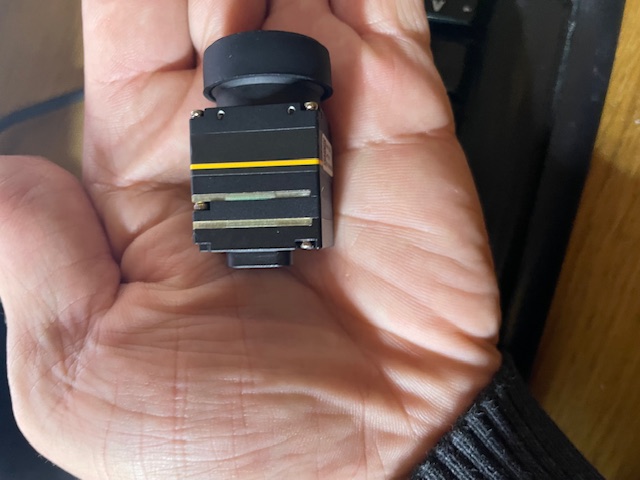First of all I would like to extend my thanks and gratitude to Minke Geense from Gaiazoo, Limburg, The Netherlands for making this test possible.
I recently obtained a couple of state of the art thermal imaging cores. One is 1280x1024 but as it didn't have a USB interface I was not able to obtain any images suitable for posting on the Internet, but the images are spectacular. The other one, a 640x512 resolution core pictured below I took to Gaia zoo for testing. I specifically wanted to know how it worked on the large animals under threat in Africa and also how well AI computer vision would work on thermal images. I had a bit of an idea from previous testing but I didn't know for sure. These cores have a very high thermal sensitivity, <= 40mK which is the minimum temperature difference it can detect. This is much lower than ones I've used in the past and it shows.

Below is a picture of Rhinos. I'm not sure of the distance, it felt like over 50m but could be just 40m. Very visible. In order to get the living things popping out in the image it's necessary to dial the contrast up quite high and then counter balance the brightness which then decreased. This core also has a number of advanced in core image processing algorithms. But one I played with was the detail enhancement which made quite a significant different. I dialed detail enhancement quite high.
Computer vision worked quite well here, but the model I was using didn't have rhinos in it, it saw them as sheep. Rhinos in sheeps clothing you might say. But the principle showed that matching thermal images with models trained on optical images works very well. It's quite possible that training on thermal images where the living things are highlighted might result in even better recognition with fewer false positives, I would expect that to be the case, but it could do with some testing.
The below is a picture of a giraffe, now unlike with rhinos the model I was using does have giraffes in it. The giraffe here is quite a bit further away than the rhinos were, I'm guessing maybe between 80-100m.
What's noticable is how well the detail enhancement worked on that giraffe. I have to ask whether recognition would have worked as well if it wasn't present. Technically, in core image processing has access to more information that is available once it's converted to an rgb image. I've seen an image of our wood burning furnace without any detail enhancement and it was just a solid blob of white light, but even with just a little bit of detail enhancement it showed none the less that there was a grill in front. This was not visible to the eye on the non enhanced image.
Anyway, I'll be supplying these thermals soon, together with a gadget that make's it easy to use. Be aware, I had to develop and reverse engineer parts of it to write my own drivers for this, it was not easy at all. It didn't work out of the box on Linux, nor on windows, but they did have an application for viewing with it on Windows. But I have intentions to deliver this in a form that will be easy to use. The ones I'll be supplying will be slightly smaller than the one in the top photo but with the same resolution and capability. (Together with a smaller version and also the 1280x1024 version, I should be able to supply at prices cheaper than the same resolution in security cameras and a more useful format I think). I still have to determine the prices.
28 October 2024 7:37pm
Wow, great work Kim! I can see how thermal would have a big advantage over IR triggering at night. Do you figure it'll be the best option when aiming for a truly smart camera? I
29 October 2024 6:30am
I think now we can start to consider thermals in situations that in the past would have been out of the question. People will obviously also want to see optical images of the animals but there may be use cases where a choice has to be made due to power constraints.
I’m thinking human wildlife conflict mitigation use cases where the device has to run on portable power for detect and response.










John Loehr